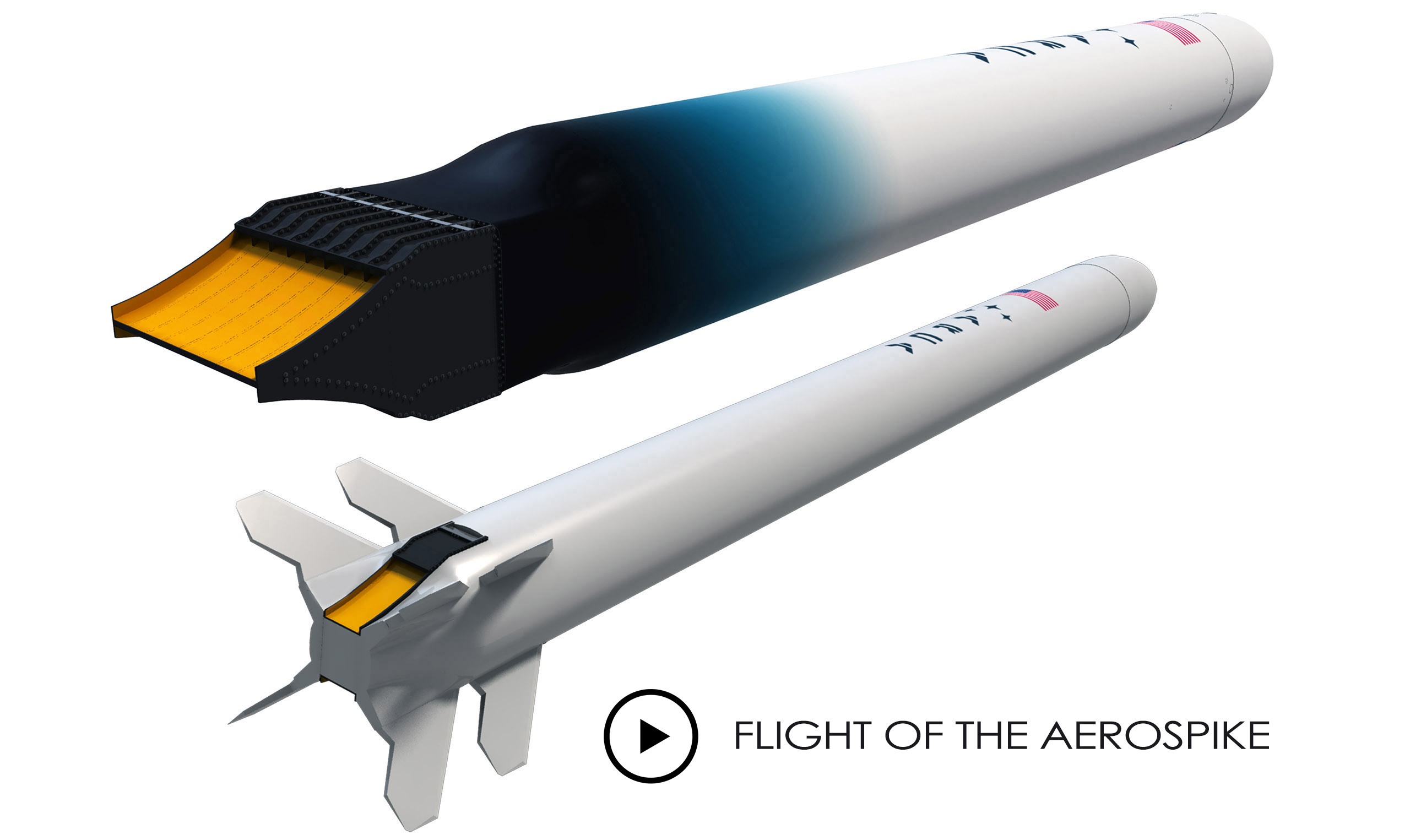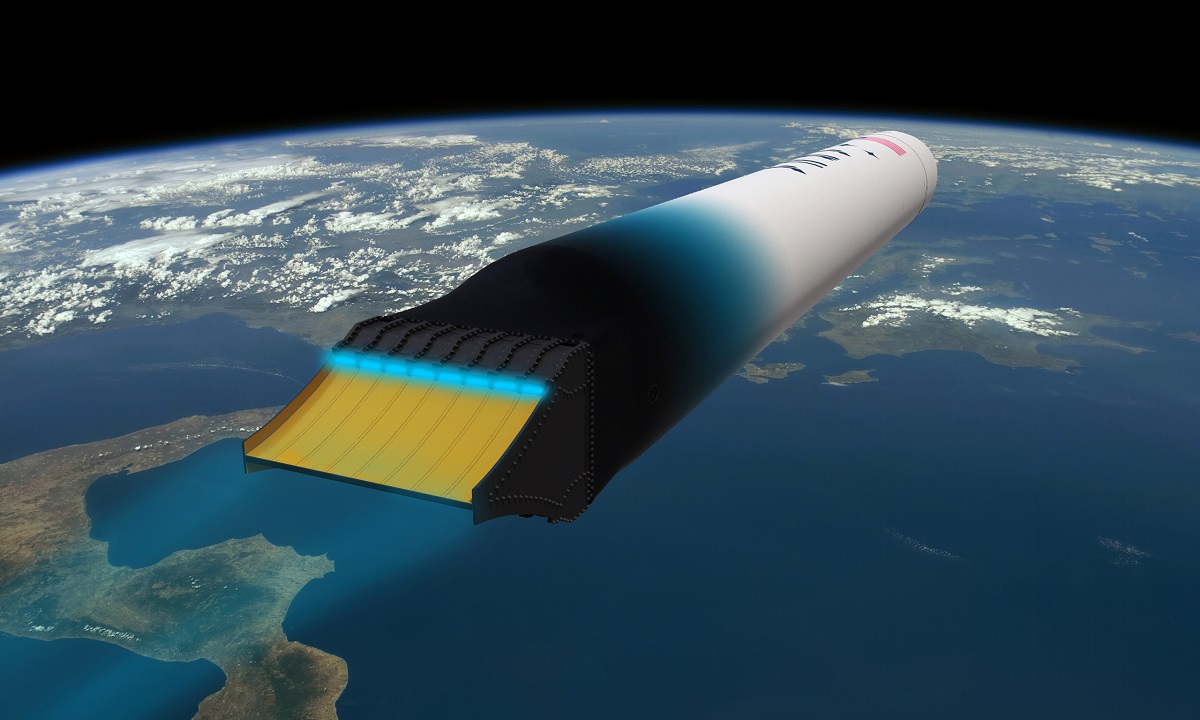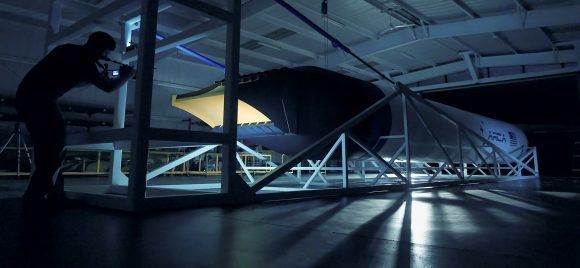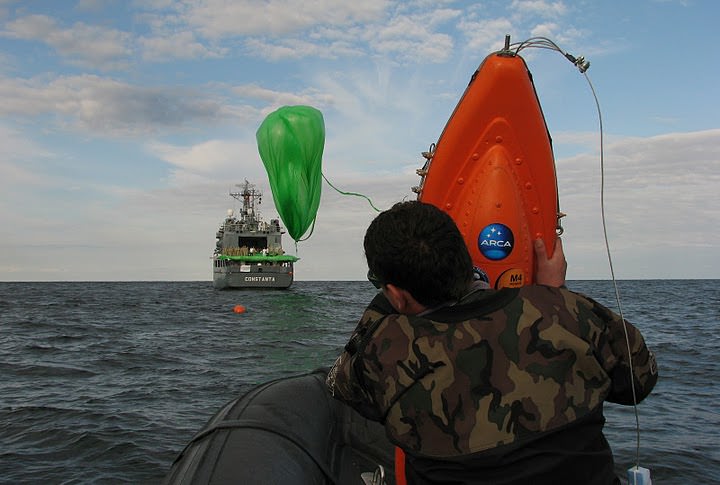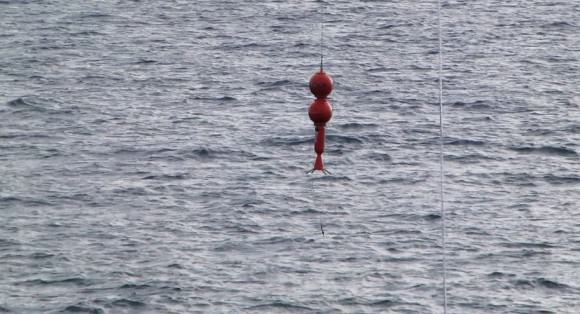The aerospike engine is a time-honored concept. In the past, NASA tested the concept extensively on the ground and hoped to incorporate it into the Space Shuttle and their next-generation Venture Star program (a Single-Stage-To-Orbit (SSTO) vehicle). However, due to budget constraints, the Space Shuttle ended up being equipped with bell-shaped nozzles instead, and the Venture Star never saw the light of day.
But thanks to New Mexico-based aerospace company ARCA, the aerospike engine is getting a new lease on life. This coming August, they will conduct a test flight of the aerospike engine using their Demonstrator 3 rocket, which will constitute the first space flight of the engine. If all goes well, it will be a major step towards the creation of a fleet of Single-Stage-To-Orbit (SSTO) rockets.
What makes the aerospike engine appealing is the fact that it offers efficient thrust over a wide range of altitudes, and is also more fuel-efficient than current engines. With traditional bell-shaped nozzles, reliable thrust tends to occur only at sea level. Beyond that, the engine isn’t capable of taking advantage of decreases in atmospheric pressure since the gases are contained by the nozzle.
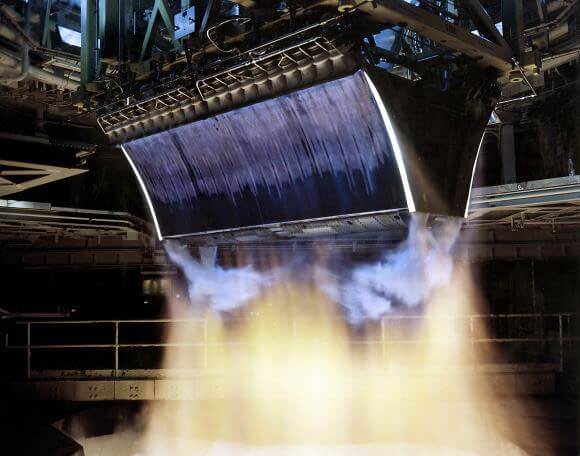
In contrast, the aerospike engine’s exhaust is capable of expanding from sea level all the way up to space, which ensures both fuel-efficiency and a high degree of specific impulse (Isp) at all flight levels. Already, ARCA and NASA have scheduled ground and vacuum tests for the engine. But in the meantime, they also want to gather data on how it performs in flight. This is where the Demonstrator 3 test comes into play.
In addition to testing the engine’s efficiency, it will also test the aerospike’s super-cold fuel storage technology. Basically, the engine relies on a decomposing 70% concentration of hydrogen peroxide at a temperature of only 250 °C to generate thrust. The byproduct of this is oxygen and water, which makes the aerospike the most environmentally-friendly rocket concept to date. As Dumitru Popescu, the CEO of ARCA, said in a recent statement:
“By sending the Demonstrator 3 rocket in space using a super cold engine, with only 250 °C instead of 3500 °C in the reaction chamber, paired with the aerospike technology, we are going to demonstrate the impressive potential of the aerospike.”
Ultimately, the goal here is to demonstrate that SSTO rockets are feasible, which ARCA is exploring with their Haas 2CA concept. The latest in the Haas rocket family, named in honor of Austrian-Romanian rocketry pioneer Conrad Haas, this launch vehicle uses hydrogen peroxide and kerosene for fuel and is capable of generating 22,900 kg (50,500 lbs) of thrust at sea level, and about 33,565 kg (74,000 lbs) in a vacuum.
Compared to multi-stage rockets, SSTOs offer both lower costs and greater flexibility when it comes to launching small payloads into orbit. According to estimates produced by Space Works and Eurostat, this small satellite market will be growing by $5.3 billion in the next decade. As such, aerospace companies that can offer competitive launch rates and flexibility will be able to take advantage of this growth.
The company unveiled the Haas 2CA back in March of 2017 at their company headquarters in Las Cruces, New Mexico. In 2018, ARCA hopes to conduct their first test launch of the Haas 2CA from NASA’s Wallops Flight Facility in Virginia. But before that can happen, the company needs to make sure the aerospike engine performs as well as expected. As Popescu explained:
“The Haas 2CA Single Stage to Orbit is just the beginning of a new generation of space vehicle, shaped by innovation that will generate lower cost. We are going to answer one of the industry’s most asked questions: can an aerospike deliver in flight the pressure compensation generated by altitude variation and deliver the expected performance by saving fuel? We want to pick up where NASA left off and prove that this technology is actually the way to go for space flights.”
The test flight, which will take place at Spaceport America in the New Mexico desert, will consist of a suborbital space flight that will take the Demonstrator 3 up to an altitude of 100 km. If this flight is achieved, ARCA will have demonstrated that the engine technology is flight qualified, that SSTO rockets are feasible, and that super cold engines paired with aerospike technology will allow for environmentally friendly suborbital rockets.

The test will also be a milestone for the commercial aerospace industry, which was founded on the desires to make space more accessible and lowering the costs associated with individual launches. And as Popescu was sure to indicate, the best way to do this is not to merely improve upon existing concepts, but leverage cutting-edge and time-tested technologies to create new ones.
“We are confident that the aerospike engine combined with composite material fuel tanks and dense fuels will significantly lower the costs for orbital and suborbital launches,” he said. “We truly believe that the answer for cost reduction of space flight is innovation, not trying to make old technologies a little bit more efficient. This will never generate significant price drop of space launches, but merely small improvements. With this philosophy in mind we expect to increase the registered value of our company from its current $20 million to at least $200 millions by 2019.”
The development of SSTOs are just one way that the commercial aerospace industry is making space exploration more economical. Other examples include SpaceX’s developments of reusable rockets, and Rocketlab‘s use of lightweight materials to create two-stage disposable rockets.
These measures are not only allowing for the commercialization of Low-Earth Orbit (LEO), but are opening up possibilities that were previously thought to be impossible for the time being – like space-based solar power and space habitats!
Stay tuned for more on this and other upcoming tests. And be sure to check out this video on how ARCA is preparing for the upcoming aerospike test flight, courtesy of ARCA:

